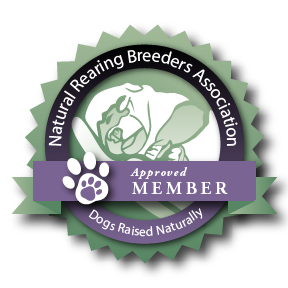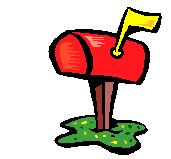HEALTH
The Beauceron is a very healthy and hardy breed, and therefore, few health problems are encountered, especially compared to some other breeds. That is mainly due to the fact that the Beauceron had never become a trendy breed, but had always been considered to be first and foremost, a working dog. The ruthless selection and at times harsh living and working conditions of the Beauceron during the late parts of the XVIIIth Century and early XIXth Century had effectively screened out any dogs with weaknesses, which contributed greatly to his robust constitution of today. Arguably, since the Beauceron does not work to the degree that it did 100 years ago, the selection for good health is not as regimented as it used to be, especially since the popularization of conformation shows.
Even though, there are four main diseases that are known to occur in the Beauceron :
- Hip Dysplasia
- Bloat and gastric torsion
- Progressive Retinal Atrophy
- Congenital Heart Diseases
HIP DYSPLASIA
Hip Dysplasia is the most common and most widespread, and it is still considered to be a complex disease, even with all of the research that has been done. It is a very common degenerative joint disease seen in dogs and there are many misconceptions surrounding it. There are many things that we know about hip dysplasia in dogs, there are also many things we suspect about this common cause of limping, and there are some things that we just do not know about the disease. Hip dysplasia results from the abnormal development of the hip joint in the young dog. It may or may not be bilateral, affecting both right and left sides. It is brought about by the laxity of the muscles, connective tissue, and ligaments that should support the joint. Most dysplastic dogs are born with normal hips but due to genetic and possibly other factors, the soft tissues that surround the joint start to develop abnormally as the puppy grows. The mostimportant part of these changes is that the bones are not held in place but actually move apart .
This separation of the two bones within a joint is called subluxation and this alone causes all of the resulting problems we associate with the disease. Research on hip dysplasia suggests that there are some aspects of the disease that have been repeatedly and independently documented and are generally accepted by the scientific community. Three important ones are :
Canine hip dysplasia is caused by the presence of many genes (polygenic). While no environmental cause has been found, many environmental factors contribute to its expression in a particular dog (phenotype).
The only current means for reducing the occurrence of hip dysplasia is by selectively breeding for normal hips.
Radiography is the accepted means for evaluating the hip status.
BLOAT AND GASTRIC TORSIONBloat and Gastric Torsion remains a problem that requires the Beauceron owner to be wary of the symptoms and to exercise a few basic precautions. A number of very good working dogs and breeding stock have been lost due to bloat and gastric torsion. Bloat and gastric torsion are also known as Gastric Dilatation-Volvulus (GDV).
It is a serious, life-threatening condition of large breed dogs, mostly the deep chested ones. It is to be treated as a medical emergency, and the dog should be rushed to the Veterinarian without delay. The promptness of the treatment can easily mean the difference between recovery and death. . Bloat usually leads to torsion, although torsion can occur without bloat.
Gastric torsion (GDV) is the twisting of the stomach after gastric distention (bloat) occurs. When torsion occurs, the stomach actually swings in a pendulum-like motion, which results with it swinging completely around the fixation point of the stomach where the esophagus passes through the diaphram, thus giving rise to a twist. The esophagus is then closed off, limiting the dog's ability to relieve distention by vomiting or belching. Often the spleen becomes entrapped as well, and its blood supply is cut off. Now a complex chain of physiologic events begins. The blood return to the heart decreases, cardiac output decreases, and cardiac arrhythmias may follow. Toxins build up in the dying stomach lining. The liver, pancreas, and upper small bowel may also be compromised. Shock from low blood pressure and endotoxins rapidly develop.
Sometimes the stomach ruptures, leading to peritonitis. Abdominal distention, salivating, and retching are the hallmark signs of GDV. Other signs may include restlessness, depression, lethargy, anorexia, weakness, or a rapid heart rate. Prevention of GDV is by far preferable to treatment, and there are a number of measures that can be undertaken to help prevent it. Despite adopting all of the possible safety measures, a dog may still develop GDV. Research into bloat suggests that diet, behavior and conformation may all play a role in the propensity of bloat. The incidence of bloat increases with the size of the dog and the depth-to-width ratio of the chest cavity. This is a conformational problem, not a genetic disease. One way to correct the problem, in theory, is to stop breeding for a bloat-prone conformation and select for smaller dogs with a chest cavity that is not so deep or narrow.In addition, the following recommendations should be followed:
- Large dogs should be fed two or three times daily, rather than once a day.
- Water should be available at all times, but should be limited immediately after feeding. Too much water at once before and after rigorous exercise should also be avoided.
- Vigorous exercise, excitement, and stress should be avoided one hour before and two hours after meals.
PROGRESSIVE RETINAL ATROPHY (PRA)Progressive Retinal Atrophy (PRA) is a disease of the retina, and is the name for several inherited diseases that are progressive and lead to blindness. The disease is non painful, and there is no cure for it. The eyes are genetically programmed to go blind. There are multiple forms of PRA which differ in the age of onset and rate of progression of the disease. Some breeds experience an earlier onset than others; other breeds do not develop PRA until later in life.With one exception, PRA in all breeds so far studied is an autosomal recessive disorder. That means that to be affected, a pup has to receive one copy of the defective gene from both parents. Thus, both parents of an affected pup must be either carriers or affected themselves. The extent of the problem in the Beauceron population is therefore unknown, although it is not believed to be widespread or problematic. Similarly, because affected dogs have two copies of the defective gene, all their progeny will be at least carriers. PRA can be diagnosed by a Veterinary ophthalmologist. More sophisticated tests such as electroretinography may also be used. In some breeds, there are DNA blood tests available to determine if a dog is either affected with or is a carrier of the disease. At this time, the DNA blood test is not available for the Beauceron. If no abnormalities are found during the exam by a board certified Veterinary ophthalmologist, the dog can be certified free of heritable eye disease through the Canine Eye Registration Foundation (CERF). Testing for PRA is optional, and therefore, few breeders choose to have their breeding stock tested.CONGENITAL HEART DISEASESCongenital Heart Diseases in dogs are malformations of the heart or great vessels. The lesions characterizing congenital heart defects are present at birth and may develop more fully during perinatal and growth periods. Many congenital heart defects are thought to be genetically transmitted from parents to offspring; however, the exact modes of inheritance have not been precisely determined for all cardiovascular malformations. Testing for Congenital Heart Diseases is optional only, but is highly recommended, as there are an increasing number of dogs, including the Beauceron, that suffer from this condition. There are various tests that can be done, either by a Veterinarian, a Specialist or a Cardiologist. The results of the tests can be sent to the OFA (Orthopedic Foundation for Animals) to be added to the database. In North America, reputable breeders will test their breeding stock for Congenital Heart Diseases. Most breeders in Europe do not test their breeding stock for Congenital Heart Diseases; it is therefore important to know and be aware of the breeder's reputation in his country prior to importing a dog into North America.



